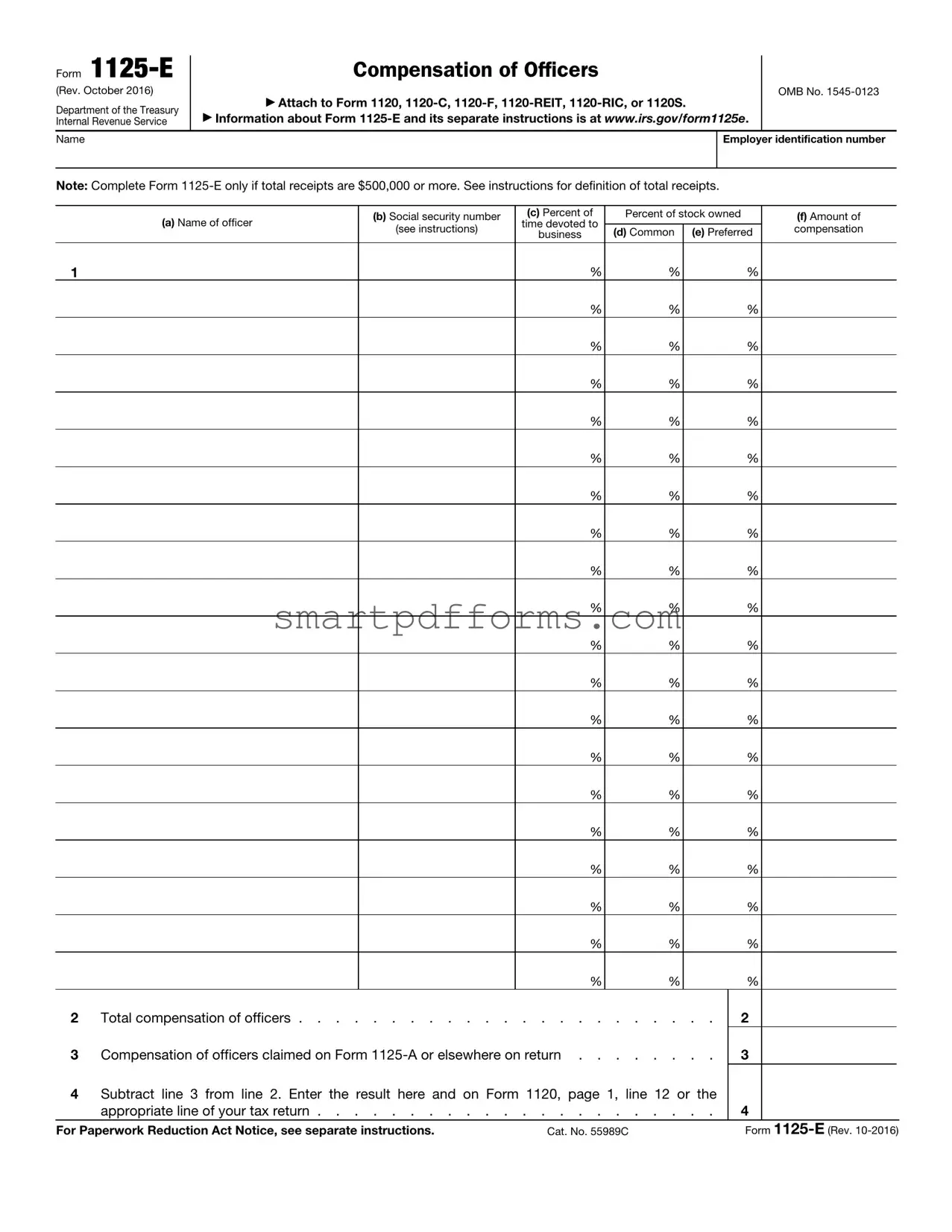Understanding Form 1125-E, titled "Compensation of Officers," involves clarifying some common misconceptions. This form, revised in October 2016, is an integral part of the documentation for certain corporations filing specific types of tax returns with the Internal Revenue Service (IRS).
Misconception 1: Form 1125-E is required for all businesses.
This is incorrect. Only corporations with total receipts of $500,000 or more are required to complete Form 1125-E. This threshold is critical because it determines the applicability of the form to a corporation. The form's instructions expressly state that it should be attached to Form 1120, Form 1120-C, Form 1120-F, Form 1120-REIT, Form 1120-RIC, or Form 1120S, depending on the type of corporation filing the return.
Misconception 2: Social Security Numbers (SSNs) of officers are optional.
Each officer's Social Security Number is a mandatory field on the form. This requirement ensures accurate identification and record-keeping for the IRS. It's a common misunderstanding that providing this information is discretionary, but in reality, omitting it can lead to processing delays or requests for additional information.
Misconception 3: The form includes detailed descriptions of compensation types.
Form 1125-E asks for compensation information but does so in a summary format. Detailed compensation breakdowns, such as salary, bonuses, or other types of remuneration, are not explicitly requested on this form. Instead, the form focuses on the total compensation, the officer's percentage of stock owned, and the amount of time devoted to the business. This condensed format aims to streamline the reporting process.
Misconception 4: Filing Form 1125-E is unrelated to other parts of the corporate tax return.
Contrary to this belief, the total compensation of officers reported on Form 1125-E directly affects other parts of a corporation’s tax return. Specifically, the final amount from Form 1125-E is entered on page 1 of Form 1120 (or the corresponding line of other relevant forms) under "Compensation of Officers." This entry is crucial for accurately calculating the corporation's taxable income.
In summary, understanding the specific requirements, purpose, and integration of Form 1125-E into the broader tax filing process can help corporations accurately report compensation of officers. Clarifying these misconceptions ensures compliance and streamlines the reporting process with the IRS.

